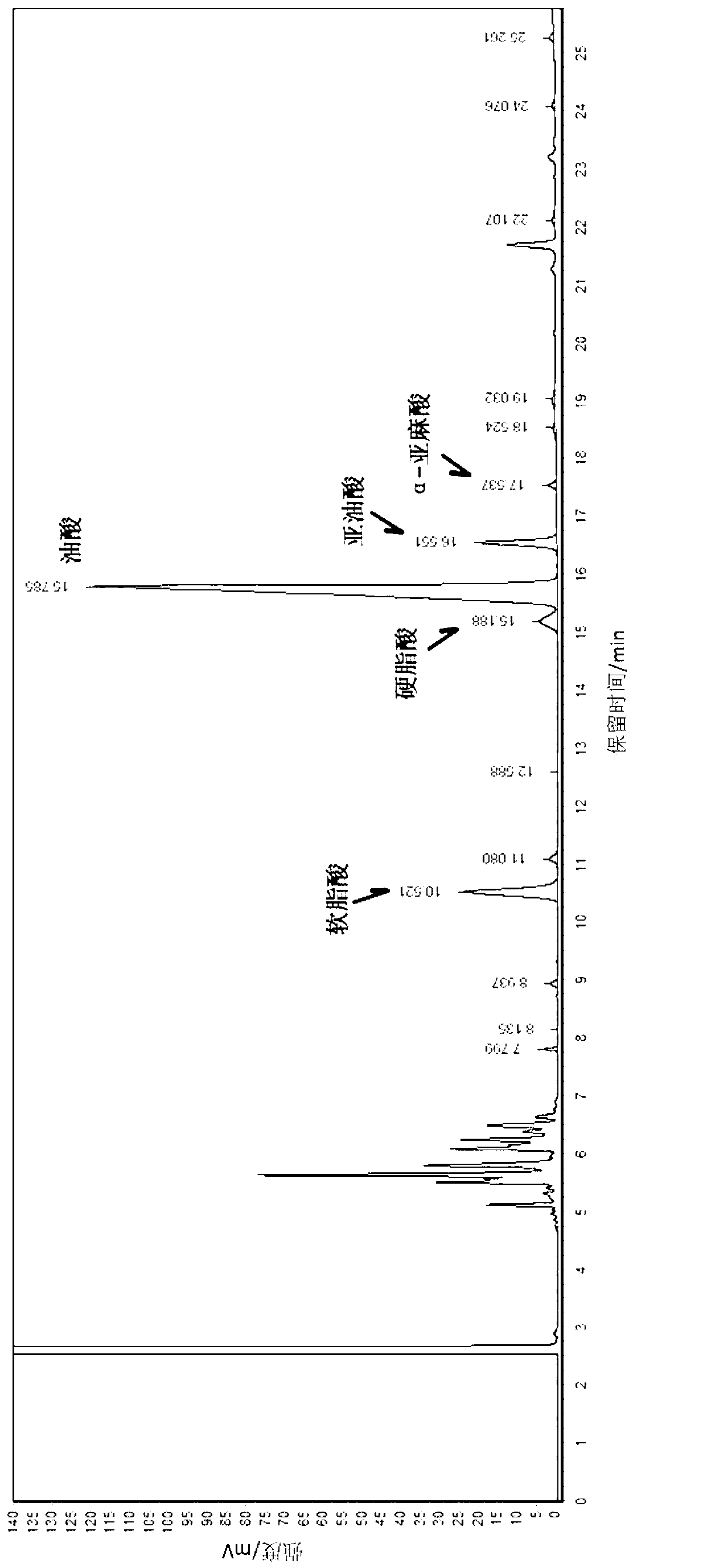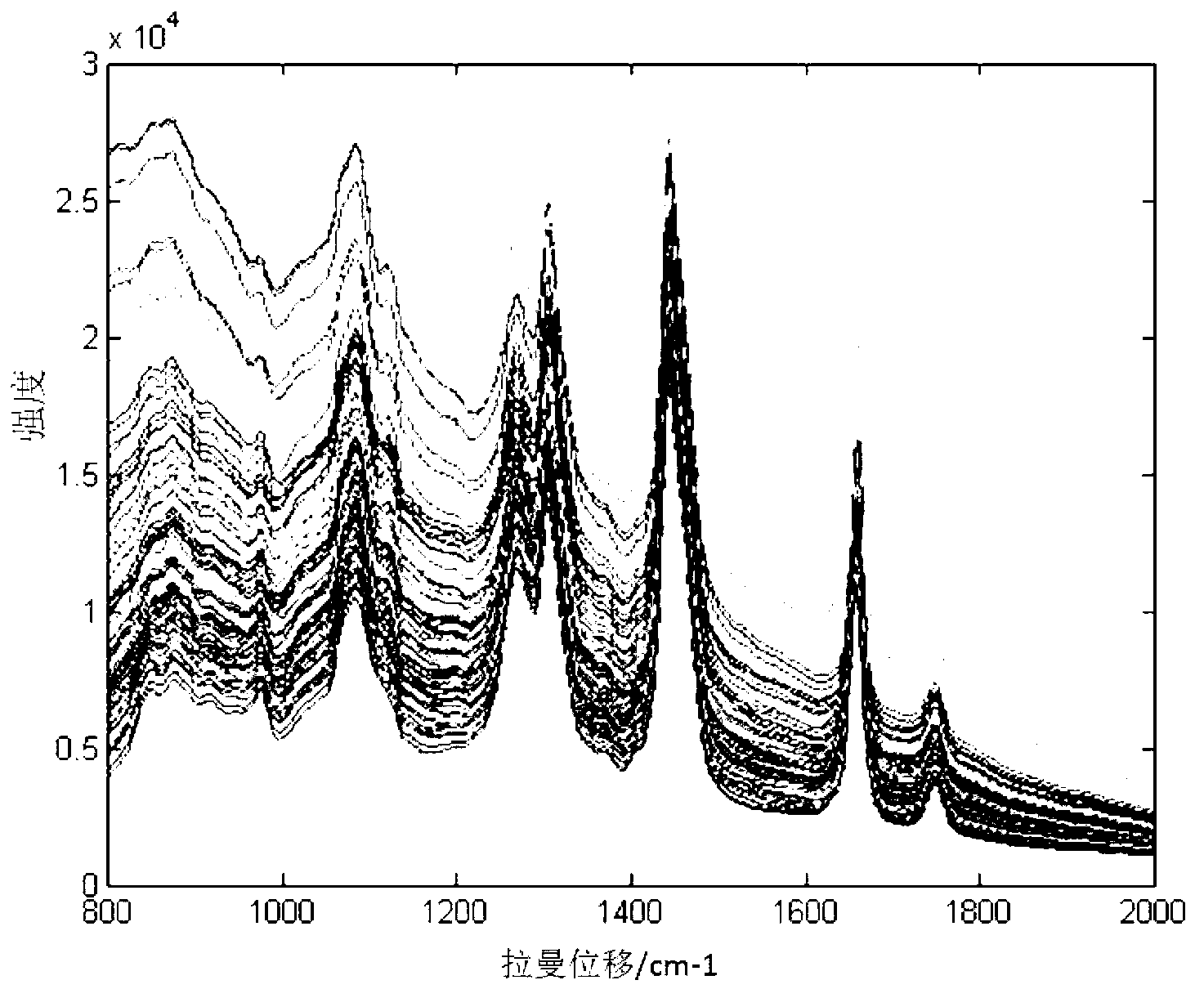Raman-spectrum-based method for detecting content of oleic acid, linoleic acid and saturated fatty acid in edible vegetable oil
A technology of edible vegetable oil and Raman spectroscopy, which is applied in the field of detection of fatty acid content of edible vegetable oil, can solve the problems of long detection time, unfavorable promotion, complicated equipment operation, etc., and achieve the effect of fast detection speed, simple operation and high accuracy
- Summary
- Abstract
- Description
- Claims
- Application Information
AI Technical Summary
Problems solved by technology
Method used
Image
Examples
Embodiment Construction
[0023] The technical solutions of the present invention will be further described in detail below in conjunction with the accompanying drawings, but the present invention is not limited thereto.
[0024] The present invention is mainly based on the position and intensity of the characteristic peaks of Raman spectrum, and rapidly detects the content of oleic acid, linoleic acid and saturated fatty acid in edible vegetable oil, and the specific steps are as follows:
[0025] (1) Sample preparation
[0026] Choose 4 kinds of olive oil (Olive) of different brands, coded as O1, O2, O3, O4; 3 kinds of corn oil (Corn), coded as C1, C2, C3; 3 kinds of soybean oil (Soy), coded as S1, S2, S3; 1 kind of sunflower oil (Sunflower), coded as F1, all 11 kinds of edible vegetable oils were purchased from large supermarkets. First measure the true content of each fatty acid in each edible vegetable oil, figure 1 Shown is a gas chromatogram of one of these olive oils, showing its composition....
PUM
 Login to View More
Login to View More Abstract
Description
Claims
Application Information
 Login to View More
Login to View More - R&D
- Intellectual Property
- Life Sciences
- Materials
- Tech Scout
- Unparalleled Data Quality
- Higher Quality Content
- 60% Fewer Hallucinations
Browse by: Latest US Patents, China's latest patents, Technical Efficacy Thesaurus, Application Domain, Technology Topic, Popular Technical Reports.
© 2025 PatSnap. All rights reserved.Legal|Privacy policy|Modern Slavery Act Transparency Statement|Sitemap|About US| Contact US: help@patsnap.com



